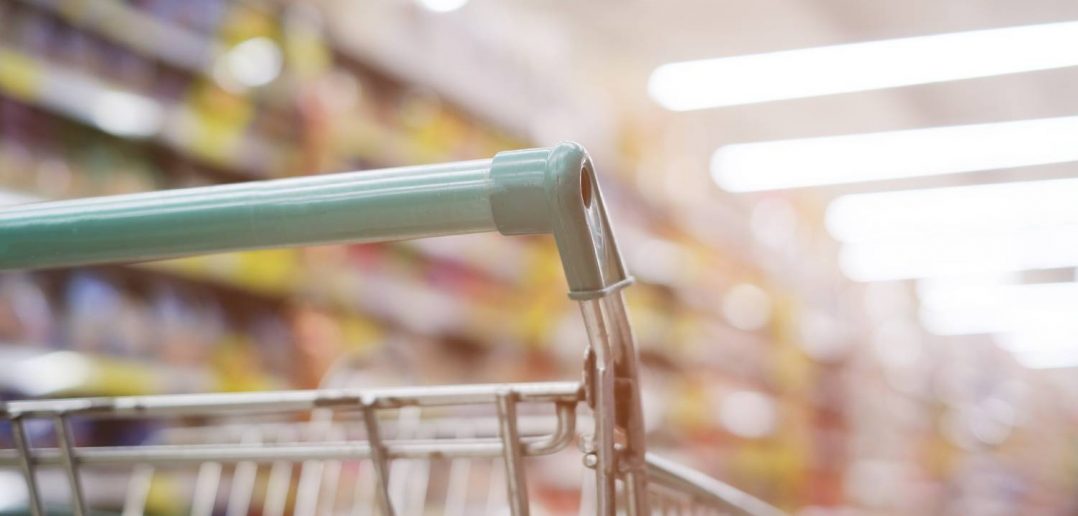Tropical Storm Ana, which formed in May this year, officially made 2021 the seventh consecutive year that a storm formed before the season's designated start. Since then we have seen a number of storms, representative of an increase of severe weather over the past few years, especially as we remember the record-breaking 2020 Atlantic Hurricane Season, which produced 30 total storms and 14 hurricanes.
After storms that create large amounts of damage pass through a community, FEMA and other federal agencies, in conjunction with state and local governments and non-profit relief organizations, assist those who have lost their homes or had their communities impacted. Often recovery can be an extensive process, and much work is done in affected communities to ensure everyone who needs assistance receives it.
While working at USDA, I saw firsthand the amount of coordination it took between the federal, state, and nonprofit organizations responsible to assist with recovery. Grocery stores, and the entire private sector, are critical delivery partners during these times.
While stores are shuttered, we worked to move food to feeding locations from federal storage warehouses in an effort to keep shelves stocked at various feeding outlets. It was our job to work with state and nonprofit partners to provide feeding options after the work by FEMA and other first responder organizations ceased, but we were always eager for stores to open after a storm to help ensure reliable access to food.
Once the stores are able to safely reopen, USDA works with each state to ensure food benefits are recouped by the populations in need across all impacted communities.
Working around a broken food supply chain
In order for grocery and convenience stores to serve their intended purpose, the supply chain had to be up and running – no small feat after a major storm. The supply chain is comprised of a vast network of entities all over the US that all need to work cohesively in order to be successful. It’s easy to think about them as links in a larger chain.
After massive storms hit and large areas of the country are shut down, the repercussions can be vast. If we take a simplistic view of the supply chain, farmers must be able to move their products to a processor and then to a supermarket in order to keep the flow of goods steady. Severe weather events create holes in the supply chain and can result in a loss of crops or livestock, creating a deficit that suppliers have to work to overcome.

Many of us felt the impacts of a natural disaster and have gone to a grocery store to stock up on supplies alongside what seemed like hundreds of our neighbors. Our shopping habits change when bad weather is rolling in – consumers tend to stock up on items with a long shelf life, as well as survival staples including water, bread, toilet paper, and batteries. These quick changes in consumer patterns add even more stress to the supply chain – as evidenced by bare store shelves.
In thinking about supply chain disruptions, these storms have come on top of the monumental challenges the industry has experienced throughout the COVID-19 pandemic. Impacts on farmers, manufacturers, the logistics and distribution infrastructure, and changes in consumer shopping habits have all created massive strains on the supply chain, resulting in a different shopping experience for the consumer.
How can the industry respond?
SAS solutions can help provide insights into consumer habits and purchasing patterns and help retailers adjust to changes in demand during times leading up to big weather events.
Our demand planning solution can help grocers anticipate demand from pre-storm shopping trips that might be out of the ordinary for their customer base and take proactive steps to try to keep items in stock, eliminating the news stories showing empty shelves where bread should be.
Read more: 5 ways companies and everyday heroes are helping feed the hungry
Equally important to consumers is knowing grocers are restocked after a storm, when consumers are returning to the stores, sometimes after an extended closure. Often when consumers return to a grocery store after a crisis, they might see limited choices on the supermarket shelves – may be only a few varieties instead of the dozen or so that are typically stocked.
SAS works with our grocery and convenience store customers to help them with demand forecasting – offering critical insights during times of uncertainty, after a weather event, or as the world reeled from the COVID-19 pandemic.
Our demand planning tools help give stability to grocers by allowing them to perform what-if simulations, helping them predict and respond quickly to events that disrupt the supply chain – allowing SAS customers to be better equipped to keep their shelves stocked and continue to serve consumers.
In the same way, the USDA worked with state and local partners to ensure food was reaching those in need, SAS supply chain solutions work to fill that same need, helping our customers serve consumers more effectively – during a normal grocery run and during times of uncertainty.
If you are one of the grocery or convenience store companies preparing for hurricanes or are still reeling from the impacts from COVID-19 on your business, let us know! SAS can help you weather these storms, as we all hope for sunnier days ahead.

